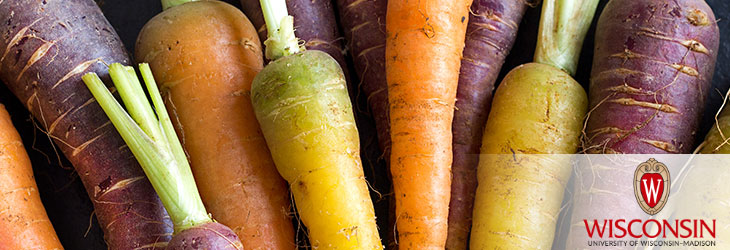Animals, Agriculture & Food

Biodegradable, Biocompatible Tannin-Chitosan Composites for Therapeutic Applications
WARF: P09128US02
Inventors: Jess Reed, Christian Krueger, Sergio Madrigal-Carballo
The Wisconsin Alumni Research Foundation (WARF) is seeking commercial partners interested in developing a tannin-chitosan composite material that can be used for drug delivery, antibacterial or antifungal applications, tissue engineering, wound healing or as adjuvants for vaccines.
Overview
Chitosan is a soluble biopolymer derived from chitin, which is a structural element in the shell of marine arthropods. Chitosan is used in water processing and agriculture. It also is used in bandages and surgical dressings. However, chitosan materials often have limited stability, biodegradability, tensile strength or biocompatibility.
Tannins are astringent plant polyphenols with the ability to bind proteins. Tannins have been linked to variety of health benefits and can be found in certain foods and beverages. They have antibacterial, antifungal, antioxidant and wound healing properties.
Tannins are astringent plant polyphenols with the ability to bind proteins. Tannins have been linked to variety of health benefits and can be found in certain foods and beverages. They have antibacterial, antifungal, antioxidant and wound healing properties.
The Invention
UW–Madison researchers have developed a new composite of tannin and chitosan. The biodegradable and biocompatible composite can be formed into hydrogel films, 3-D foams, biogels, nanoparticles or liposome coatings for a variety of therapeutic applications.
This material combines the advantages of chitosan, which has blood-clotting and antimicrobial properties, with those of tannins, which have antibacterial, antifungal, antioxidant and wound healing properties. As compared to chitosan alone, the composite has improved stability, higher drug loading capacity, better drug release properties, improved cell uptake, greater porosity, improved tensile strength and increased thermal stability. In addition, this composite is non-cytotoxic in vitro.
This material combines the advantages of chitosan, which has blood-clotting and antimicrobial properties, with those of tannins, which have antibacterial, antifungal, antioxidant and wound healing properties. As compared to chitosan alone, the composite has improved stability, higher drug loading capacity, better drug release properties, improved cell uptake, greater porosity, improved tensile strength and increased thermal stability. In addition, this composite is non-cytotoxic in vitro.
Applications
- Dermal patches for wound healing or drug delivery
- Formulations for other drug delivery systems, including oral solutions, IV solutions or aerosols
- Scaffolding for skin and cartilage tissue cultures
- Matrices for tissue engineering
- Coatings for biomedical devices
- Packaging materials to prevent oxidation of meats and lipids
- Adjuvants for vaccines
- Dietary supplements
Key Benefits
- Biodegradable and biocompatible
- Composite is stronger and has better mechanical properties than known chitosan materials.
- The tannin component adds antifungal, antibacterial and antioxidant properties.
Additional Information
For More Information About the Inventors
Related Intellectual Property
Tech Fields
For current licensing status, please contact Emily Bauer at [javascript protected email address] or 608-960-9842